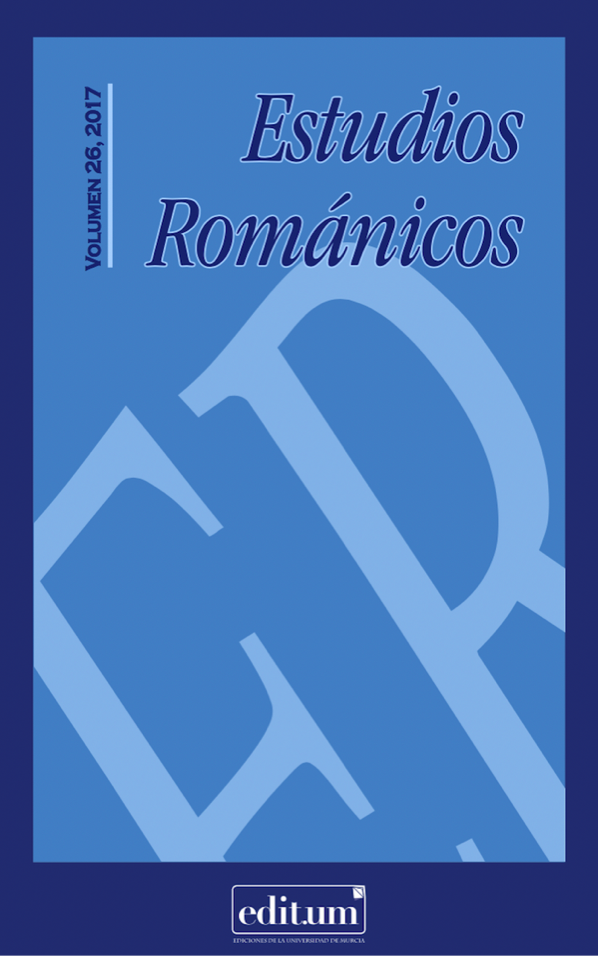Don Quijote, Las Meninas, and the Baroque Notion of Metaart
Abstract
Don Quixote and Las Meninas represent, from two different artistic realms, a symbolic reection upon the nature of Art. Cervantes’ Don Quixote could be considered a book of books, where the literary phenomenon is dramatized and becomes part of the ctionalized world: libraries, the idealization of books and characters, the literary critique that some characters undertake, and the very story is an allegory of literature. Its contemporary Las Meninas, a painting in which metaartistic reection reaches its height, shows a collective portrait where the content of the canvas includes the artist, the spectators, and, through a set of mirrors, it creates the notion of perspective. Both works go far beyond their concrete themes and situations in order to represent transcendent scenes that show the essence of the artistic phenomenon. A novel of novels, a painting of paintings, Don Quixote and Las Meninas both participate of a similar preoccupation that is conveyed through the pages of the novel and the lines of the painting. This study aims to highlight these theoretic and pragmatic conjunctions dealing with the baroque expression of Art though Art.
Downloads
References
ALBERTI, Rafael (1998): “Velázquez”. A la pintura. Madrid: Universidad de Alcalá, Club internacional del libro, 105-111.
DÄLLENBACH, Lucien (1991) : El relato especular. Trad. Ramon Buenaventura. Madrid: Visor.
DE CERVANTES, Miguel (1998): Don Quijote de La Mancha. Ed. Francisco Rico. Barcelona: Crítica.
FOUCAULT, Michel (1968): Las palabras y las cosas, una arqueología de las ciencias humanas. Trad. Elsa Cecilia Frost. Buenos Aires: Siglo veintiuno editores.
FREUD, Sigmund (1979): La represión. Buenos Aires: Amorrortu.
FUENTES, Carlos (2005): “Elogio de la incertidumbre”. Discurso de aceptación del doctorado honoris causa de la Universidad de Castilla-La Mancha. El País, 23 de abril. Acceso el 10 de abril de 2017. [http://elpais.com/diario/2005/04/23/babelia/1114213160_850215.html]
GARCÉS, María Antonia (2005): “En las fronteras de la ficción: Historia del Cautivo (Quijote 37-42)”. Príncipe de Viana. Vol. 66, 236: 619-632.
GARCÍA JÁÑEZ, Francisca (2008). “Un Quijote que llora: melancolía y lágrimas en el cuadro de Urbano Lugrís”, en: Alexia Dotras Bravo (ed.). Tus obras los rincones de la tierra descubren: Actas del VI Congreso Internacional de la Asociación de Cervantistas, Alcalá de Henares: Centro de Estudios Cervantinos, 319-332. GORRÍA, Emilse (2008): “Introducción”, Don Quijote de la Mancha. Buenos Aires: Colihue, 21-26.
HATZFELD, Helmut (1966): Estudios sobre el Barroco. Madrid: Gredos. MAESTRO, Jesús (2015): “En el Quijote está el genoma de la literatura, no se volverá a repetir una obra con ese valor”. Atlántico, 26 de mayo. Acceso el 12 de abril de 2017. [http://www.atlantico.net/articulo/cultura/quijote-genoma-literatura-no-vol- vera-repetir-obra valor/20150526104641476976.html
MANET, Édouard (1865): “Lettre à Henri Fantin Latour. Dimanche, 3 septembre”. Deslettres. Acceso el 18 de abril de 2017.
[http://www.deslettres.fr/lettre-dedouard-manet-henri-fantin-latour-cest-le-peintre- des-peintres-il-ne-ma-pas-etonne-mais-ma-ravi/]
NAUPERT, Cristina (1998): “Afinidades(s) electivas. La tematología comparatista en los tiempos del multiculturalismo”. Dicenda: Cuadernos de Filología Hispánica. Vol. 16: 171-183.
ORTEGA Y GASSET, José (1965): “Introducción a Velázquez”. Obras completas. Madrid: Ediciones Castilla, 457-506.
PALOMINO, Antonio (1724): El Parnaso español, pintoresco laureado. Vol. 3. Madrid: Lucas Antonio de Bedmar.
PORTÚS, Javier (2013): Conferencia: Velázquez y la familia de Felipe IV. Museo Nacional del Prado, 16 de octubre. Youtube. Acceso el 18 de abril de 2017. [https://www.youtube.com/watch?v=Qxgj_U8zi5E]
RILEY, E.C. (1962): Cervantes’ Theory of the Novel. Oxford: Clarendon.
SARDUY, Severo (1987): Ensayos generales sobre el Barroco. Méjico: Fondo de Cultura Económica.
SARDUY, Severo (2013): “La cosmología barroca: Kepler”, Pedro Aullón de Haro (ed.). Barroco. Madrid: Verbum, 279-298.
TORRENTE BALLESTER, Gonzalo (1984): El Quijote como juego y otros trabajos críticos. Barcelona: Destino.
WÖLFFLIN, Enrique (1952): Conceptos fundamentales de la Historia del Arte. Madrid: Espasa-Calpe.
Las obras que se publican en esta revista están sujetas a los siguientes términos:
1. El Servicio de Publicaciones de la Universidad de Murcia (la editorial) conserva los derechos patrimoniales (copyright) de las obras publicadas, y favorece y permite la reutilización de las mismas bajo la licencia de uso indicada en el punto 2.
2. Las obras se publican en la edición electrónica de la revista bajo una licencia Creative Commons Reconocimiento-NoComercial-SinObraDerivada 3.0 España (texto legal). Se pueden copiar, usar, difundir, transmitir y exponer públicamente, siempre que: i) se cite la autoría y la fuente original de su publicación (revista, editorial y URL de la obra); ii) no se usen para fines comerciales; iii) se mencione la existencia y especificaciones de esta licencia de uso.
3. Condiciones de auto-archivo. Se permite y se anima a los autores a difundir electrónicamente las versiones pre-print (versión antes de ser evaluada) y/o post-print (versión evaluada y aceptada para su publicación) de sus obras antes de su publicación, ya que favorece su circulación y difusión más temprana y con ello un posible aumento en su citación y alcance entre la comunidad académica. Color RoMEO: verde.












